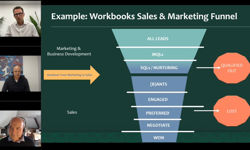You’re a small publisher with a few titles and advertising as a major revenue stream. What, if anything, is holding you back and stifling growth?
In part, it will be the same difficult choices about digital migration and multi-platform publishing that big publishers face too, but in many cases, the main obstacle facing small publishers is ‘time’, or to be more precise, a lack of it. Many of the fundamental business processes, such as advertisement booking and invoicing, are quite simply taking up way too much time. Business growth comes, says Stephanie Cope, sales and marketing manager at Publishing Software Company (PSC), through a combination of launching more titles and selling more advertising, and both these take time … and time is the one thing that small publishers just don’t seem to have enough of.
The DIY approach
It’s not difficult to pinpoint the reason why business processes are often so time-consuming for smaller publishers. Typically, in the start-up phase of the business when tight cost control is so vital, publishers will use standard Microsoft Office products to manage their advertising sales. Order forms will be typed into a template on Word and emailed out; signed order forms will be entered onto a spreadsheet, which will then be used as the basis for everything from ad copy chasing to flat planning before being finally printed off and passed to the accounts team for them to rekey into either Word (again) or an accounts package like Sage, for invoicing.
It’s a siloed system; cheap but clunky and extremely time consuming.
The inefficiencies are numerous: duplication of effort as the same data is rekeyed multiple times; error-prone as the more times data has to be rekeyed the greater the chances of mistakes being made and things being missed, with late orders often proving particularly problematic; performance-inhibiting as sales and production staff have no quick and easy reports or system prompts they can rely on to chase outstanding orders / artwork.
“A manual, non-integrated system such as this is fraught with problems”, says Stephanie. “You can probably just about get away with it if you have a single title and single sales person, but it will quickly become a millstone around your neck once you try to launch new titles, or take on additional sales people.”
The solution
However hard you try, there is a limit to what you can achieve with a DIY approach. The solution is obvious – invest in a proper ad management system, with built-in contact management functionality, which integrates seamlessly with your accounts software. Simple. The bad news is that this requires some expenditure; the good news is that it’s really not that much. There are some very reasonably priced ad management systems available, designed specifically for the publishing market.
“Small publishers need to understand the true opportunity cost of operating a DIY system,” says Laurence Cope, managing director of PSC, whose flagship product Advertising Manager has been managing ad sales for publishers for over 25 years.
“Over the years”, continues Laurence, “working closely with our publishing clients, we’ve identified the pressure points in publishers’ operations and designed our software to address them. Advertising Manager streamlines those operations and everything about the system is set up to minimise hassle.”
“Ultimately,” says Stephanie, “it’s all about saving time and reducing errors. We estimate that using a system like Advertising Manager typically saves an accounts person two to three days a month and a sales person two days a month.”
Contact and order details are keyed once only; order forms (with electronic sign-up) despatched within minutes; status reports run whenever needed to highlight outstanding order forms or advertising copy; the system integrates with all the popular accounts packages like Sage, Pegasus and Xero making invoice runs little more onerous than pushing a button. Series bookings are a piece of cake and management reports that can access comprehensive order history are instantly available. Advertising Manager comes with 250 standard reports already plumbed in along with an in-built report writer in case you want to create more…
‘Time-saving’ is a recurring theme in our discussions. For instance, when it comes to order taking, the whole process from first contact with the advertiser through entering the ad booking to emailing the confirmation note can be done in under two minutes, claims Stephanie.
Time saved enables publishers to grow and growth is the other recurring theme.
According to Laurence, Advertising Manager, with its simple monthly per-user fee and no separate charges for additional titles, has been priced to encourage growth. He points to the testimonial from Simon Leslie, CEO of Ink, on PSC’s website: “When we started using PSC we had 6 members of staff, a few titles and a small office in Battersea. Now we have over 200 members of staff in the UK, over 40 titles and offices in London, Melbourne, New York, Atlanta, Brazil, China and Singapore.”
PSC history
The first incarnation of Advertising Manager was written in 1988. Laurence was a programmer for the company and he took over the business in the 90s. Working as a one-man band from home for many years, he built an impressive client list that includes Cedar, Ink, NFU, RCNi and Mark Allen Group. The company has developed a suite of publishing related products, including Subscriptions Manager, and its flagship product is Advertising Manager. After years of helping other companies to grow, about three years ago, Laurence took the decision to expand his own company. He acquired new offices in Stourport, daughter Stephanie joined to handle sales and marketing, another developer was taken on, along with two specialist sales staff.
It’s the little things
“Usually,” says Stephanie, “the trigger for purchasing Advertising Manager is the realisation that the DIY approach is no longer fit for purpose and that no amount of sticking plaster solutions will ever make it so. Often, the final straw will be a missed order with the very obvious financial hit that that entails.”
Once installed, she often finds that the big system features (in-built CRM module, integration with accounts etc etc etc) soon get taken for granted and that what delights new users most is the whole host of “little things” that the publisher didn’t realise the system could do: those nice-to-haves that soon become can’t-live-withouts – features like email address verification, legally binding electronic signatures for order forms, integration with email service provider Adestra, security settings that make it hard for staff to walk off with your client and prospect list, to name but a few.
In the pipeline
Good software systems like Advertising Manager don’t stand still. Regular upgrades to the system are run throughout the year, both to bug-fix and to add new functionality. Current medium term development projects include enhancing the main system dashboard, to make it more graphical based (pie charts et al) and launching an app which will allow sales people to access the system outside the office, using their smartphones. The easy-to-use app will enable them to interrogate the sales database, send emails and place orders while they are out on the road. Stephanie plans to have both these developments ready to demonstrate on their stand at World Publishing Expo, taking place in Vienna this October.
Dodgy data
What bit of advice, I ask Laurence and Stephanie, would they give to publishers, irrespective of what system they use to manage their ad sales. They answer as one: make sure your data is clean and properly segmented. “Dirty data is the bane of publishers’ lives,” says Stephanie. “It is very easy for valuable client and prospect data to be miskeyed, duplicated or incomplete, which means that marketing efforts will inevitably under-perform, leaving publishers with lower returns on their marketing investment. It’s more than just data cleanliness; segmentation is vital too. Clients and prospects need to be classified by whatever criteria you might want to target them by in future. Uncategorised prospects mean that the targeting for any given sales campaign will always be incomplete.”
“The answer,” adds Laurence, “is to keep on top of it: to have clear inputting guidelines, to train all staff in their use and to periodically check that they are being followed. A simple coding system so that all prospects can be properly categorised is also essential. Even with Excel, you can increase your chances of having clean data by making certain input fields mandatory and using the template functionality.”
Come on board
How easy is it to move from an Excel based system to Advertising Manager? “Well”, says Stephanie, “once you’ve signed up, the quicker you can get your data to us the better. We charge a one-off fee for installation, which includes data migration and training. From beginning to end, the onboarding process is usually measured in days and weeks rather than months. Moving from one system to another always involves a bit of upheaval, but we’re good at hand-holding! At PSC, we’re very proud of our customer service. We guarantee that there will always be someone available to take your call during business hours and 99.9% of support calls are resolved on the first call.”
Stephanie continues: “Our program looks after over 1,000 publications and invoices over £25 million a month for our clients worldwide. We’re looking to grow those figures substantially over the next couple of years. If your current ad management system is coming apart at the seams and you feel it might be starting to hold you back, then we’d love to hear from you.”
Publishing Software Company
Old Anglo House, Mitton Street, Stourport On Severn, Worcestershire, DY13 9AQ
Stephanie Cope, Sales & Marketing Manager
Email: steph@p-s-c.co.uk
Tel: 020 8088 2737
Web: www.p-s-c.co.uk










